Home / Albums / Technology / Weapons / Artillery 57

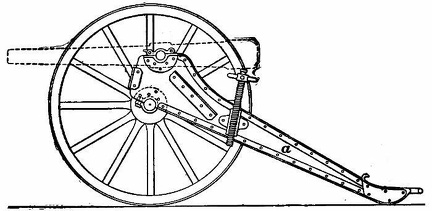 The 1.65-Inch Hotchkiss Mountain-Gun Carriage
The 1.65-Inch Hotchkiss Mountain-Gun Carriage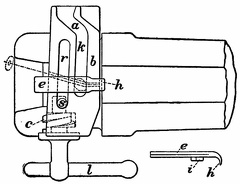 The 1.65-Inch Hotchkiss Mountain-Gun Mechanism
The 1.65-Inch Hotchkiss Mountain-Gun Mechanism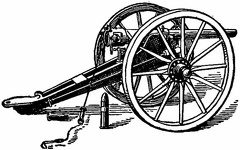 The 1.65-Inch Hotchkiss Mountain-Gun
The 1.65-Inch Hotchkiss Mountain-Gun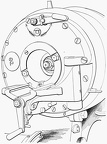 rotating crank-catch turned 90°
rotating crank-catch turned 90°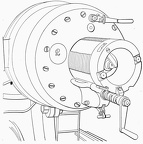 the block released
the block released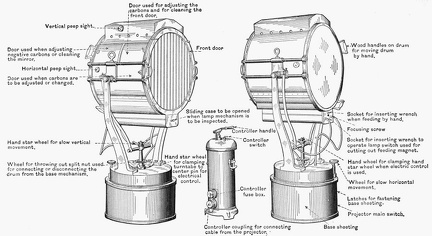 36-inch searchlight and controller
36-inch searchlight and controller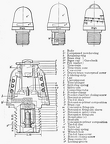 Frankford arsenal time percussion or combination fuse - Model 1900
Frankford arsenal time percussion or combination fuse - Model 1900 boat-telephone
boat-telephone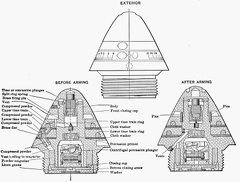 Frankford arsenal 21-second combination fuse
Frankford arsenal 21-second combination fuse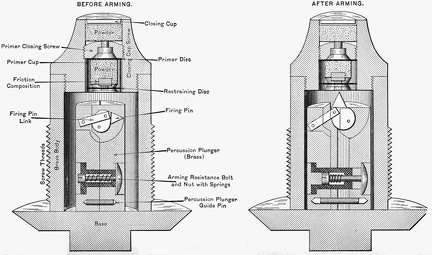 Frankford arsenal centrifugal fuses
Frankford arsenal centrifugal fuses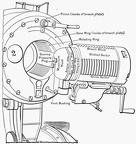 Block swings free to right of gun
Block swings free to right of gun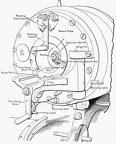 Breech in normal position—closed
Breech in normal position—closed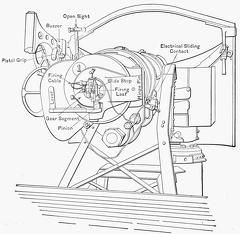 5 inch R.F. gun and breech mechanism
5 inch R.F. gun and breech mechanism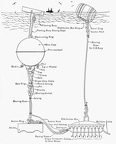 An assembled mine
An assembled mine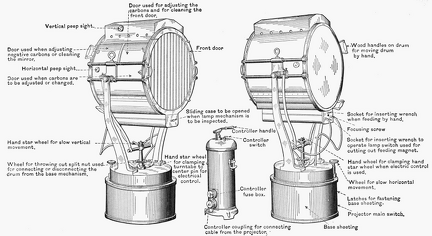 36-inch searchlight and controller
36-inch searchlight and controller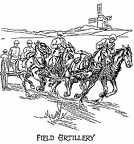 Field Artillery
Field Artillery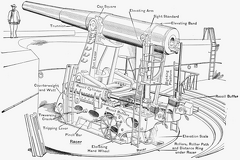 12 Inch Disappearing - raised
12 Inch Disappearing - raised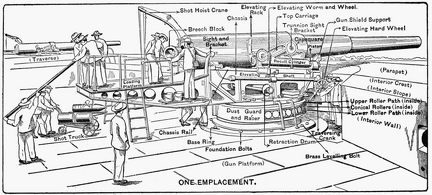 12 inch barbette - non-disappearing
12 inch barbette - non-disappearing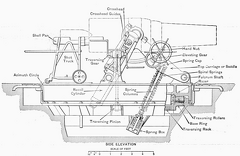 United States Carriage model of 1896
United States Carriage model of 1896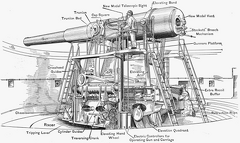 Latest model 12inch disappearing carriage and gun
Latest model 12inch disappearing carriage and gun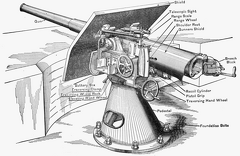 3 inch Rapid Fire Gun
3 inch Rapid Fire Gun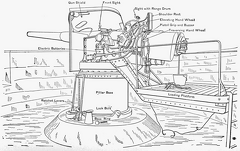 5 inch rapid fire
5 inch rapid fire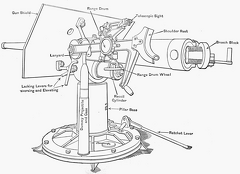 3 inch R.F. Gun
3 inch R.F. Gun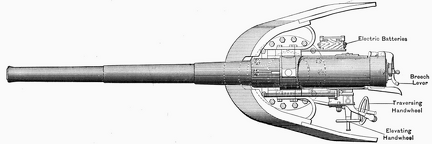 4.7 inch 120 mm q.f. Gun on centre pivot pedestal mounting
4.7 inch 120 mm q.f. Gun on centre pivot pedestal mounting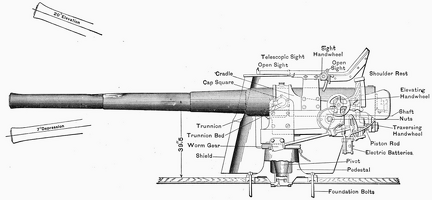 4.7 inch Q.F. (Pedestal Mount.)
4.7 inch Q.F. (Pedestal Mount.)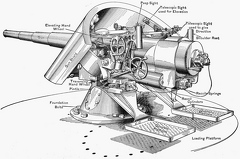 5 inch Rapid-fire gun (Pedestal Mount.)
5 inch Rapid-fire gun (Pedestal Mount.)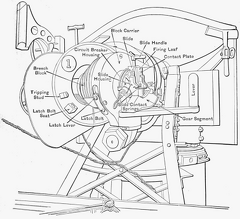 5 Inch R.F. gun (showing breech mechanism)
5 Inch R.F. gun (showing breech mechanism)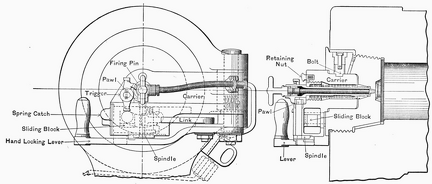 4.7 inch. Breech closing and firing gear
4.7 inch. Breech closing and firing gear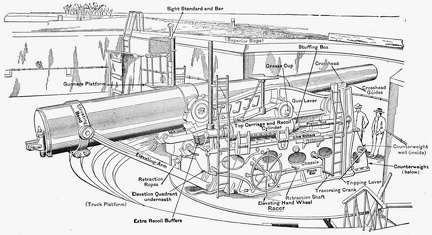 12 Inch Disappearing
12 Inch Disappearing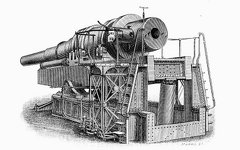 Krupp's 15.6 Breech-loading Gun (breech open)
Krupp's 15.6 Breech-loading Gun (breech open) Ancient Screw Breech loader
Ancient Screw Breech loader Small chambered Cannon
Small chambered Cannon Queen Elizabeth’s Pocket Pistol
Queen Elizabeth’s Pocket Pistol Pierrier or Paterera
Pierrier or Paterera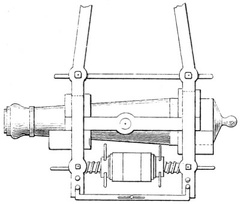 New Pattern Eprouvette
New Pattern Eprouvette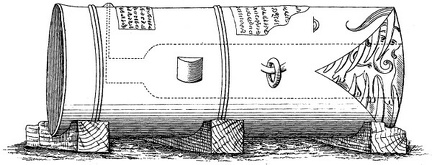 Moolik i Meidan
Moolik i Meidan Mons Meg
Mons Meg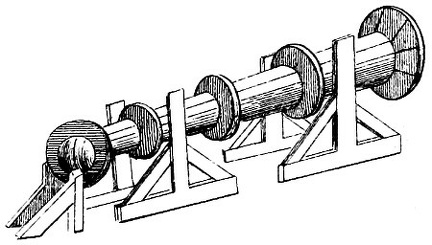 Mode of mounting
Mode of mounting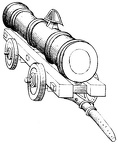 Mode of Mounting (2)
Mode of Mounting (2)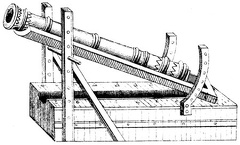 Method of obtaining elevation
Method of obtaining elevation Long Serpentine of Wrought Iron
Long Serpentine of Wrought Iron Hooped Cannon in wooden bed
Hooped Cannon in wooden bed Gun and Querrel
Gun and Querrel Giorgio Martini,
Giorgio Martini, From the wreck of the 'Mary Rose'
From the wreck of the 'Mary Rose'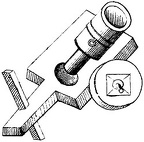 Early part of 15th Century
Early part of 15th Century Chinese Field piece Peiho 1860
Chinese Field piece Peiho 1860 Bombard and Carriage
Bombard and Carriage Ancient Screw piece
Ancient Screw piece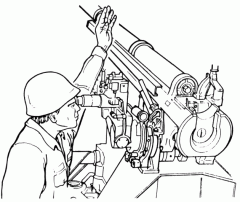 Sighting the M102 Howitzer
Sighting the M102 Howitzer M102 Top view
M102 Top view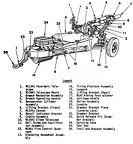 General Information - M102 Howitzer
General Information - M102 Howitzer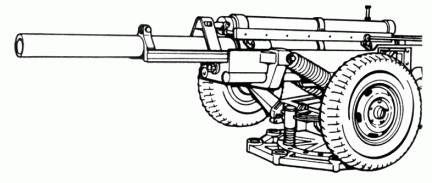 M102 Howitzer
M102 Howitzer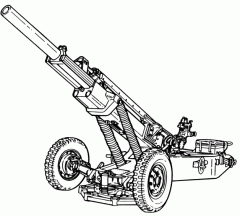 M102 Howitzer
M102 Howitzer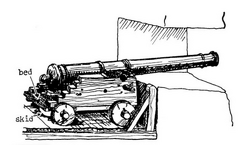 French Garrison Gun
French Garrison Gun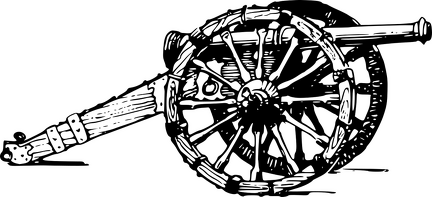 Light Artillery of Gustavus Adolphus
Light Artillery of Gustavus Adolphus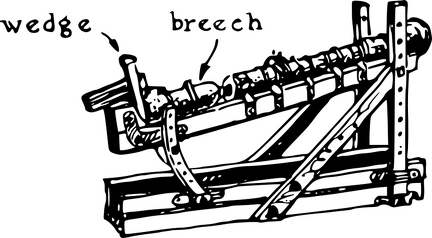 breechloader
breechloader



